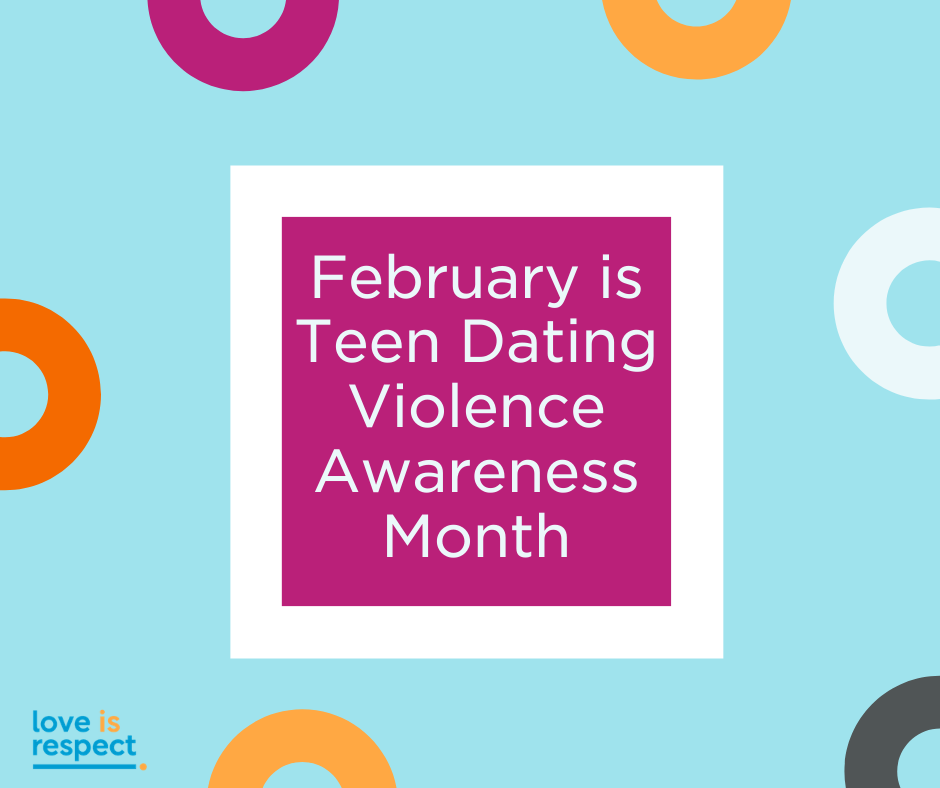Maura Leahy, MPH, CHES, Program Analyst, Child & Adolescent Health at the Association of Maternal & Child Health Programs

As February comes to an end, so does the annual observance of Teen Dating Violence Awareness Month (TDVAM). We wanted to bring additional attention to this important issue by highlighting teen dating violence (TDV) strategies and resources that Title V Maternal and Child Health (MCH) programs use that can elevate TDV prevention year-round.
Adolescence is a unique period of opportunity and growth when young people are making deeper connections with their peers, developing interests and passions, and testing the waters of romantic relationships. This range of relationships are natural parts of a young person’s brain and identify development, but it is vital that these relationships are safe and healthy. Adults have a role to play by creating and supporting safe environments in which adolescents can thrive and grow. Title V can also play a role in supporting programming and capacity geared towards preventing TDV so that adolescents and young adults can experience this stage of development in a safe and healthy manner.
What is TDV and why is it an issue? TDV is a type of intimate partner violence (IPV) that can include four types of behavior: physical violence, sexual violence, emotional or verbal abuse, and stalking. These behaviors can happen in-person or electronically. Since emotional abuse is most common among youth, it is important to recognize the warning signsso that red flags of potential TDV are not overlooked. TDV is much more common than adolescents and adults may realize: 1 in 3 three teens in the U.S. will experience some form of dating violence. Victims of TDV are more likely to experience symptoms of depression and anxiety and to have suicidal thoughts, and these consequences can be long-lasting. Additionally, most adult survivors of IPV first experienced violence when they were adolescents (National Intimate Partner and Sexual Violence Survey, 2015).
What is Title V doing to prevent TDV? According to their recent MCH action plans, many states incorporate healthy relationship programming through a variety of federal funding streams (such as the Personal Responsibility Education Program, Sexual Risk Avoidance Education Program, Rape Prevention and Education Program), and through broader Positive Youth Development programs. Two main strategies emerged in these efforts: implementing evidence-based curricula and outreach/media campaigns. Here’s a snapshot of what some states are doing:
- Evidence-Based or Trauma-Informed Curricula
- Alaska is developing a Fourth R and Healthy Relationships Plus Program online training that will include resources for parents and educator on talking with youth about healthy relationships. They are also supporting a statewide training and dissemination of the Coaching Boys Into Men curriculum.
- Florida is implementing the Green Dot strategy in north Florida High Schools. Green Dot focuses on shifting cultural norms and emphasizes personal responsibility and prevention through behavior modeling.
- Massachusetts’ Safe Spaces for LGBTQ youth program provides trauma-informed support that is specific to LGBTQ youth and issues they face including partnership violence.
- Outreach and Media Campaigns
- Georgia conducts public awareness events on TDV and outreach on sexting and Georgia laws.
- Nevada provided education and awareness on dating violence to 9,673 middle and high school-aged youth. They also presented a workshop on “Supporting Adolescents with Disabilities Who Are Experiencing Relationship Abuse and Sexual Violence: Setting the Stage for Prevention.”
- Utah created social media content on TDV prevention which it disseminated to local health departments. In 2019, they held a Positive Teen Behavior campaign and released a news advisory on TDV to local media.
Resources for Title V programs to promote throughout the year:
- Check out the YRBS Explorer to learn how your state is doing on TDV. The YRBS website also has datasets, analysis tools, and media.
- Dating Matters: Strategies to Promote Healthy Teen Relationships; a comprehensive TDV prevention model.
- love is respect including their 24/7 National Dating Abuse Helpline accessible via text (“LOVEIS” to 22522), phone (1-866-331-9474), and live chat.
- Futures Without Violence
- StrongHearts Native Helpline
- Casa de Esperanza
Broader Violence Prevention/IPV Resources:
- CDC’s Preventing Intimate Partner Violence Across the Lifespan: A Technical Package of Programs, Policies, and Practices.
- Connecting the Dots: An Overview of the Links Among Multiple Forms of Violence
| If you or someone you know is victim of domestic violence, please call the National Domestic Violence Hotline: 1-800-799-SAFE (7233) |
